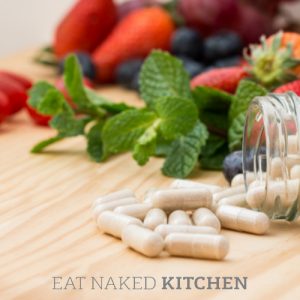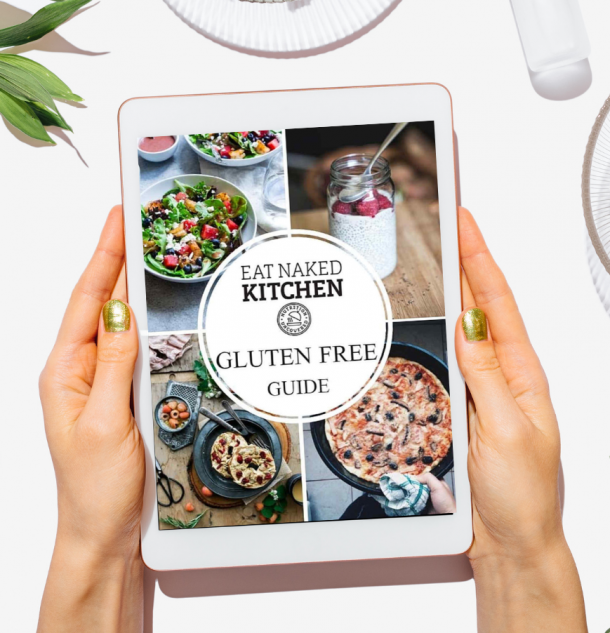Growing up as an only child in a family that didn’t touch much, I’ve learned to appreciate my space. This can create interesting situations with my cuddle-bug children. My eldest daughter, Sia, is sometimes so on top of me at dinner time, that we do this little dance down the bench at our kitchen table. I’ll be sitting at one end of the bench and she’ll snuggle up next to me. But I’m eating, so I need a little space, right? I move down a bit and she’ll snuggle in closer. By the end of the meal, I’ll be all the way at the other end of the bench, with her right there snuggled in next to me. And so I give in: we snuggle.
I used to think she just had no sense of personal space, but I’ve recently learned how powerfully we need that physical touch on both a physiological and biochemical level as well as emotionally.
It all comes down to a little hormone called oxytocin.
Have you heard of it? Most haven’t, so don’t be embarrassed if that’s you. If you have heard of it before, it was probably in the context of childbirth and breastfeeding.
Oxytocin is one of the key hormones in childbirth. It’s largely responsible for uterine contractions, it facilitates the breast milk let-down reflex, and it encourages maternal behavior immediately postpartum to help build that all-important mother-baby bond. Breastfeeding stimulates the production of oxytocin in both the mother and baby, and encourages the feeling of closeness, a little sleepiness, some euphoria, and the intimate bonding that happens during this precious time. For the nursing mamas out there: that feeling of your milk coming in at the sound of your baby crying? That’s oxytocin on the job.
And yet: oxytocin is for much more than childbirth and nursing
While most of the research on oxytocin has focused on its role in childbirth and breastfeeding, this is just one of its many jobs. It is one of the primary hormones involved in what the Swedish researcher, Dr. Kerstin Uvnäs Moberg, calls the “calm and connection” response, which is in many ways the antidote to our “fight or flight” stress response.
The calm and connection response is characterized by a sense of quiet, pleasure, relaxation, companionship, social security, and bonding – the opposite of those qualities we experience when the stress response is engaged. What does this mean on a practical level?
Well, the research is still nascent, but preliminary findings suggest that:
- Oxytocin reduces anxiety [1]
- It decreases aggression while increasing more friendly, sociable behavior [2]
- It encourages curiosity [3]
- It promotes maternal instincts and behaviors [4]
- It encourages sexual activity [5]
- It diminishes the sense of danger and instills a feeling that there’s less to be afraid of [6]
- It reduces the sensation of pain [7]
- Because of the reduced stress, it increases opportunities for learning
- It lowers blood pressure and heart rate [8]
- It lowers the body’s sodium content and reduces water retention [9]
- It accelerates the healing of wounds [10]
And some would argue that this is an incomplete list. As you can see, the physiological manifestations of oxytocin are in many ways the precise opposite of what we experience under the influence of stress hormones.
Oxytocin is both a hormone and a neurotransmitter
Speaking of physiology, let’s take a minute to look more closely at oxytocin itself.
Oxytocin is created in the hypothalamus, which is the master conductor gland responsible for directing the endocrine system in its entirety. Basically, the hypothalamus is our master hormone director. From the hypothalamus, oxytocin is transported to the pituitary, another endocrine gland, from which it is released into the bloodstream for distribution throughout the body. As such, oxytocin is a hormone, traveling through the blood to affect various organs or parts of the body.
What’s really cool about oxytocin is that it is also delivered directly from the hypothalamus to the nervous system as a neurotransmitter, where it causes specific localized effects on the brain (as opposed to traveling through the bloodstream like hormones do). This means that oxytocin has a direct impact on the nervous system, influencing areas of the brain that control the autonomic nervous system.
If this is getting too complicated for you, don’t worry. The key takeaway is this: since oxytocin is both a hormone and a neurotransmitter, it has a complementary and compounded impact on the body through these two different channels.
The gift that keeps on giving
Here’s the other cool thing about oxytocin: whereas most hormones have a control mechanism called a negative feedback loop to turn off the production of that hormone when the body has enough, the production of oxytocin generates more oxytocin. In fact, oxytocin stimulates its own production by activating oxytocin receptors on the very cells that produce it, which then stimulates the production of even more oxytocin. It really is the gift that keeps on giving.
So how do I get more of it?
Those of us in the health field are well aware of the detrimental effects of stress on overall health and wellbeing, and we tend to focus on all the things we can do to reduce that stress. We’re actively looking for the sources of stress and trying to either eliminate them, reduce them or mitigate their impact. But while this approach is well-intended and an important part of healing, it’s still focused pretty much entirely on the stress side of the equation. And in these days of a global pandemic, economic uncertainty, and massive social unrest, there are so many stressors that trying to eliminate them is an exercise in futility.
What can be just as powerful, if not more so, is to proactively seek out those things that stimulate the opposite response – the calm and connection response. Luckily, there are things you can actively build into your day to stimulate the production of oxytocin and glean its many benefits, even if you’re not a breastfeeding mama.
[Sidenote: if you are breastfeeding and either stop abruptly or wean your baby too quickly, you may notice you dip into a depression and feel emotionally upside down. This is because of the lack of oxytocin. The activities below are extra important for you and can help you replace that oxytocin you’re now missing.]
Here are some ideas to get you started:
- Pleasant touch. Think cuddles and physical intimacy (it doesn’t have to be sexual, although that is one great option!) If you’ve got a life partner, do you cuddle and touch each other regularly? If you’ve got kids, do you cuddle with them even though they’re not nursing anymore? Even petting an animal can generate the production of oxytocin. A good hug goes a long way…
**What’s really nice about this is that it’s such a win-win situation. When we’re physically close with others, both parties get the hormonal boost, whether on the giving or receiving end. - Massage, especially a really loving and gentle massage, is a great option. Intense deep tissue massage has its benefits, but it’s not a key way to promote oxytocin production.
- Social connections. Spending quiet and connected time with close friends and loved ones can be a powerful way to generate more oxytocin.
- Eating! This one surprised me. Dr. Moberg includes eating as one of the oxytocin-generating activities for the “internal massage” it provides as your digestive system breaks down and absorbs the food. Furthermore, there are certain hormones involved in the digestive process, such as cholecystokinin (CCK) for example, that activate the vagus nerve which in turn stimulates the production of oxytocin. CCK is secreted in response to the intake of fat. This is why the more fat we eat in a meal, the more we get that “happy drowsy” feeling afterward, something that’s not as pronounced in a low-fat meal.
- Balanced exercise and physical movement also have been shown to stimulate oxytocin production. I say “balanced” because if you’re overtraining and pushing too hard, this puts more stress on the body and flips the hormonal balance in the other direction.
Ultimately, research into oxytocin and the calm and connection response is still nascent, and there is much we don’t yet understand regarding the mechanisms involved. However, it is helpful to understand that it’s far more than simply the absence of stress – it is its own separate mechanisms that can be actively and intentionally engaged.
If this topic interests you and you’d like to do a deeper dive, I highly recommend Dr. Moberg’s work, in particular The Oxytocin Factor: Tapping the Hormone of Calm, Love and Healing. She explains the mechanisms in much greater detail and explores areas of research where we’re just beginning to understand the possible connections and power of this amazing love hormone!
How do you generate oxytocin in your day-to-day? We’d love to hear from you in the comments below.
Did you know oxytocin is for much more than childbirth and nursing? This is one badass hormone!






